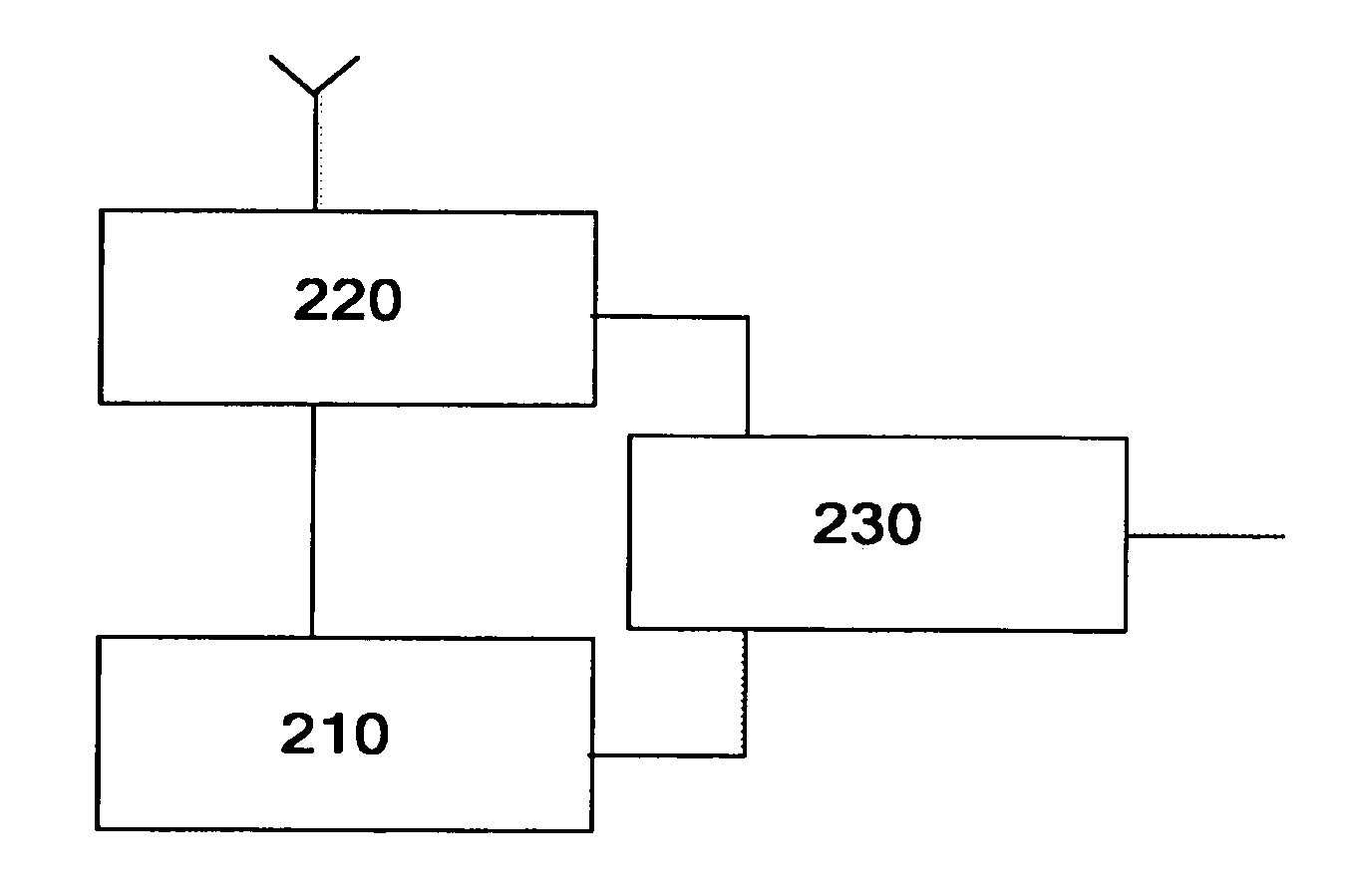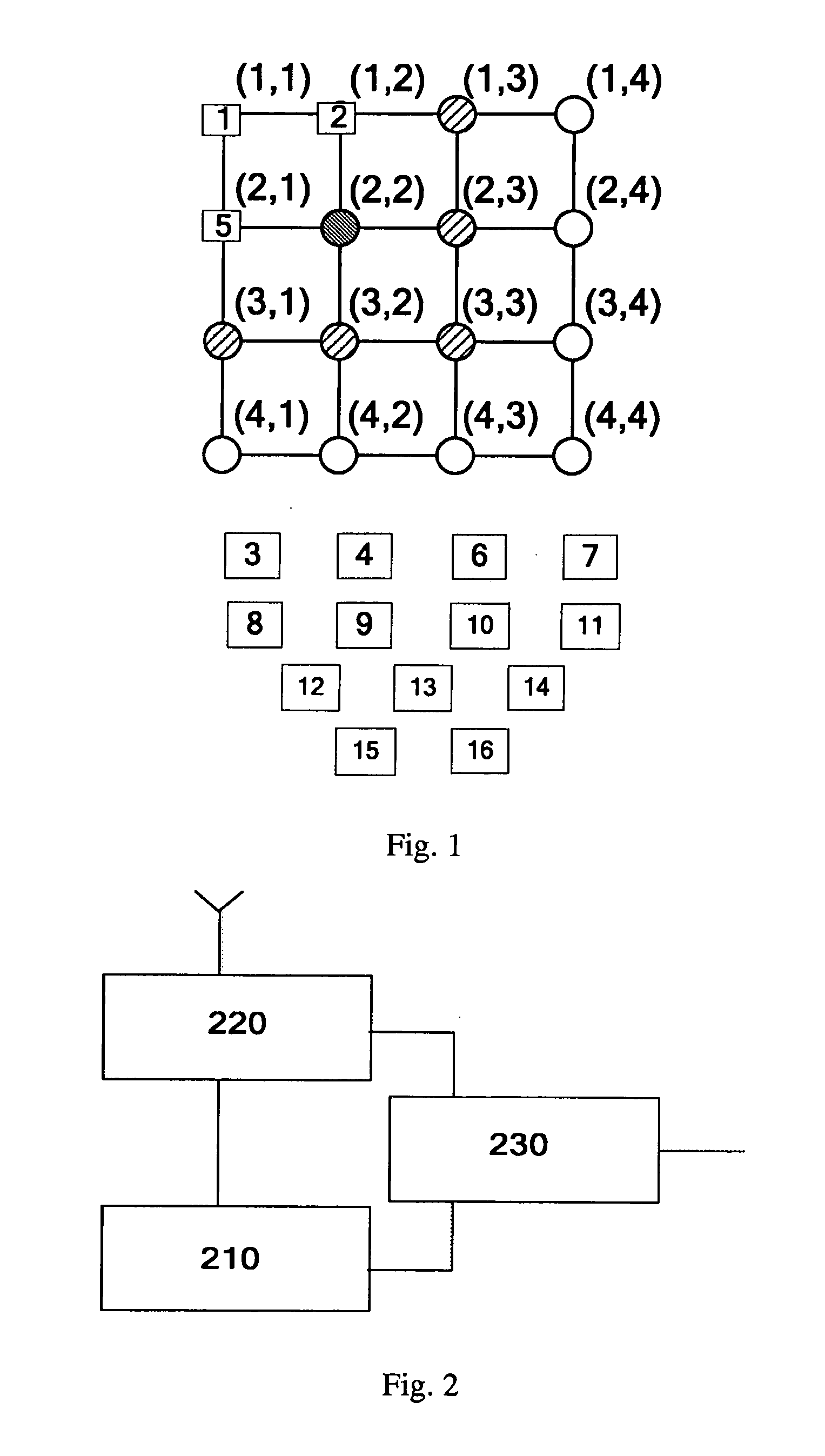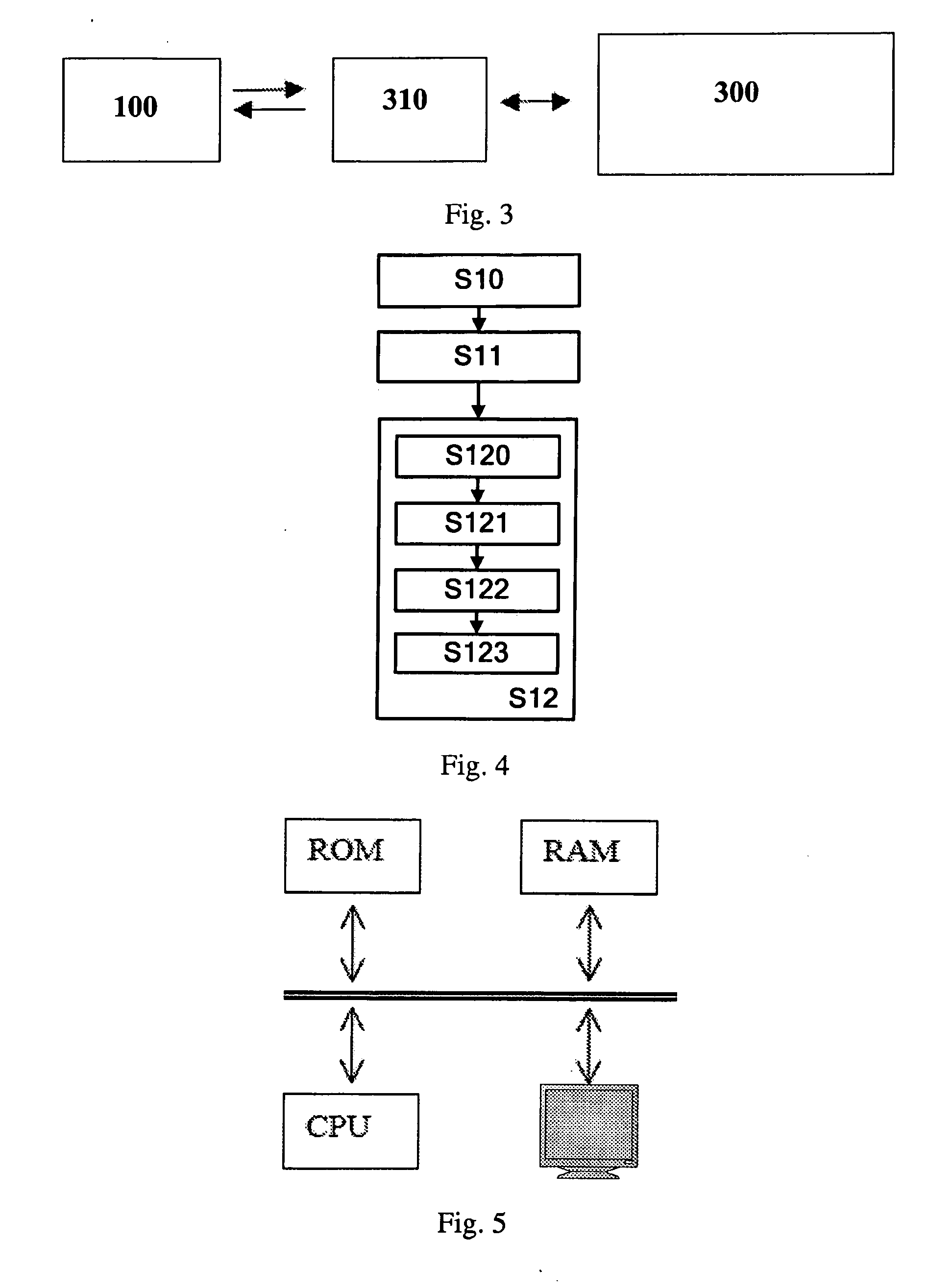Method and apparatus for automatic assigning of devices
a technology of automatic assigning and devices, applied in the direction of measuring devices, instruments, using reradiation, etc., can solve the problems of difficult manual assigning, easy errors, and inability to properly perform the assignment process, so as to improve the success rate of the topological graph assignment, reduce the complexity of computation, and increase the accuracy of the device-assigning process
- Summary
- Abstract
- Description
- Claims
- Application Information
AI Technical Summary
Benefits of technology
Problems solved by technology
Method used
Image
Examples
first embodiment
[0025]FIG. 1 schematically illustrates an illumination area based on a wireless network, wherein the topological graph of this illumination area is shown, i.e. the positions (1,1), (1,2), . . . (4,4) of each illumination node in the area are all known. There are illumination devices 1, 2, . . . , 16 installed at the nodes in the illumination area, but which illumination device corresponds to which node is unknown. As shown in FIG. 2, each node comprises an illuminating element 210, a wireless communication module 220, such as a ZigBee RF module, and a power supply 230. The wireless communication module 220 can perform wireless communication with wireless communication modules of other nodes, based on the ZigBee RF protocol or other protocols, and establish a wireless network 100. A signal sent by any one of the devices carries the unique identification information of the sending device; the receiving device can determine the sending device of the radio signals, based on the identifi...
second embodiment
[0048]Before the embodiment according to another aspect of the present invention is described, related knowledge about the safety margin of the assigning will be introduced first. As shown in FIG. 6, in the topological graph where nodes are distributed in a square grid shape, the reference devices 1 and 2 are placed at the reference node (1,1) and (1,2) respectively; other unknown target illuminating devices are placed at other nodes, and the configurations of the wireless communication modules of each illumination device are identical (for example, antenna gains and transmitting power are identical). When the assigning node (2,1) closest to the node (1,1) is assigned, since the distance between the node (2,1) and the node (1,1) is the smallest one of the distances between the node (1,1) and each of all nodes (except for the reference node (1,2)), the assigning can be based on the following principle: among all target devices, the illumination device having the largest RSSI between ...
third embodiment
[0073]The assigning success rate of the whole topological graph is related to the node number of the topological graph. As shown in FIG. 10, the simulation result illustrates the relation between the number of successful assigning operations and the node number of the topological graph; its vertical coordinate represents how many out of fiftyassigning operations are successful, the horizontal coordinate represents the standard deviation of measurement errors of RSSI (assume that the measurement error of RSSI is zero mean Gaussian distributed). The assigning method employed by the simulation is the method used in the aforesaid first embodiment. As can be seen, with the increase of nodes from sixteen to twenty-five (each comprises three reference nodes), the number of successful assigning operations is decreased. The reason is that the more nodes there are, the more likely wrong assigning will occur for the plurality of nodes on the whole. Meanwhile, wrongly assigned nodes may be take...
PUM
 Login to View More
Login to View More Abstract
Description
Claims
Application Information
 Login to View More
Login to View More - R&D
- Intellectual Property
- Life Sciences
- Materials
- Tech Scout
- Unparalleled Data Quality
- Higher Quality Content
- 60% Fewer Hallucinations
Browse by: Latest US Patents, China's latest patents, Technical Efficacy Thesaurus, Application Domain, Technology Topic, Popular Technical Reports.
© 2025 PatSnap. All rights reserved.Legal|Privacy policy|Modern Slavery Act Transparency Statement|Sitemap|About US| Contact US: help@patsnap.com



